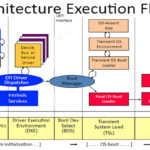 Percepio introduces Detect software for embedded systems and edge device testing, bringing continuous observability to development workflows. The tool extends existing Continuous Integration and Continuous Testing processes by implementing runtime monitoring and diagnostic capture capabilities for embedded software development teams.
Percepio introduces Detect software for embedded systems and edge device testing, bringing continuous observability to development workflows. The tool extends existing Continuous Integration and Continuous Testing processes by implementing runtime monitoring and diagnostic capture capabilities for embedded software development teams.The system monitors performance parameters during testing phases, identifying timing violations and watchdog timer margin breaches before they develop into system failures. When anomalies occur, Detect automatically captures diagnostic data including core dumps, call stacks, and system traces, providing engineers with comprehensive forensic information for analysis.
Detect operates through an on-premises server infrastructure, offering remote access capabilities through a centralized dashboard. This architecture enables engineering teams to collaborate on issue resolution while maintaining data privacy and security requirements. The software integrates with existing development environments and supports diverse hardware configurations without cloud service dependencies.
The tool addresses specific challenges in RTOS-based embedded systems, particularly focusing on multithreading errors and system stability monitoring. It captures performance metrics during actual system execution, enabling developers to analyze real-world behavior patterns and identify potential failure modes during testing phases.
From a technical implementation standpoint, Detect works alongside Tracealyzer for visual debugging and analysis of diagnostic data. The system can be extended to include post-deployment monitoring through DevAlert integration, creating a continuous feedback loop for system observation. This implementation supports modern development practices while maintaining compatibility with existing embedded software workflows and testing procedures.
The engineering specifications demonstrate particular value for industries utilizing edge computing and real-time systems, where traditional testing methodologies often prove insufficient for detecting subtle system anomalies. By implementing runtime monitoring during development and testing phases, engineering teams can identify and address potential stability risks before deployment, reducing debugging cycles and associated development costs.





Leave a Reply